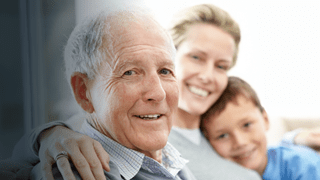What is Safeguarding in Health and Social care?
As the health and social care sector includes many businesses and organisations that are responsible for looking after children, young people and vulnerable adults, safeguarding is essential in order to keep everyone safe from harm. But what does that actually look like?
In this article, we’re going to take a look at what safeguarding involves, why it’s important, what the law says about it and what safeguarding might look like in the health and social care sector.
What is Safeguarding?
Safeguarding is a concept that was introduced several decades ago in the United Kingdom and refers to the collection of measures that ensure groups such as children, young people, and vulnerable adults are protected from abuse, harm and neglect in society. These measures are wide ranging and ensure that everything from sexual abuse to malnutrition does not occur.
A note on adults and children: It’s very important to be aware that safeguarding processes are different when it comes to children and vulnerable adults. Different groups have different needs, and of course are able to make their own, differing, judgements. However, the broad concept of safeguarding and what it should achieve applies equally to both.
Why is Safeguarding Important?
Safeguarding is particularly important because the groups in question - children, young people and vulnerable adults - are those most at risk from abuse, neglect and harm. This is primarily because they have a lessened ability to keep themselves safe, which means that it is the responsibility of others to ensure that happens. As a result, anyone who works with or is otherwise responsible for these groups is likely to need to understand what safeguarding is, and how they can play a part in it.
Safeguarding and the Law
In health and social care, safeguarding is a legal obligation for all organisations, whether public or private. There are a number of pieces of legislation that will guide this, in addition to various standards, processes and precedents that are set by local authorities. When it comes to Health and Social Care, there are four major laws that workers will need to be aware of, and they are the following:
The Children Act 1989 - This is a core piece of legislation, and a hugely important one. It enshrines many of the most important safeguarding concepts when it comes to children, and aims to make sure that the welfare of all children is a priority. Social work pertaining to children will be informed by this law, which describes a number of orders which allow for children being cared for, protected, supervised and more.
The Children and Social Work Act 2017 - This Act builds on many of the principles of the Children Act, increasing provision for care leavers, giving clinical commissioning groups more responsibility, protecting whistleblowers, and generally ensuring that child safeguarding practices work and are being followed.
The Care Act 2014 - This is the main piece of legislation when it comes to safeguarding adults that are deemed vulnerable. It sets out a full framework for how everyone involved in safeguarding can protect adults from abuse, harm and neglect.
The Safeguarding Vulnerable Groups Act 2006 - This Act deals with the vetting process for those that will be working with vulnerable people. Safe recruitment is one of the important safeguarding principles.
In addition to these laws, data protection legislation is also important to safeguarding, as this is naturally a sensitive topic that must be treated with all of the security that important data warrants. As a result, the Data Protection Act may also be pertinent. It’s also worth noting that there is additional legislation for safeguarding outside health and social care, such as in educational settings.
What are the 6 principles of safeguarding?
Within the Care Act 2014, there are six important principles when it comes to safeguarding adults – empowerment, prevention, proportionality, protection, partnership and accountability. Let’s look at each one in more detail:
Empowerment - Vulnerable people should feel that they have the power to make their own decisions, supported by others where necessary. They should have a say in how they are cared for.
Prevention - It’s always more effective and better for vulnerable people that any abuse, harm, or neglects is prevented before it actually happens.
Proportionality - Safeguarding should strive not to be overly intrusive in the lives of vulnerable people and their family, friends and carers. It’s important that the safeguarding response is proportional to risk.
Protection - Simply put; those who are in need should be given protection, in whatever way they need it, whether this is protection from harm or abuse, and whether it manifests itself physically, mentally or in any other way.
Partnership - Communities as a whole, including businesses, local authorities and anyone related to health and social care have a part to play in preventing, detecting and reporting neglect and abuse.
Accountability - There should always be a strong level of accountability when it comes to safeguarding; all parties should know their responsibilities, and the transparency of processes should be considered too.
As safeguarding covers so much, you can imagine there are many different safeguarding examples that could crop up in health and social care. It could be a doctor recognising the signs of FGM in a young female patient and deciding how to take action. Or a social care worker deciding how to report a disclosure of abuse from a child, or a care work recognising the signs of financial abuse in a patient.
Let’s take a look at two examples in more detail.
Our first example is a care home for the elderly. In this business, you have staff looking after a group of adults who vary considerably in their level of health, general quality of life, and decision-making abilities. As a result, carers need to think very carefully about how they safeguard those in their care. There are lots of potential issues. For example, elderly relatives are sometimes taken advantage of when it comes to their finances in later life. Staff need to be observant and have the ability to make a report if they feel this type of abuse is occurring. Physical abuse is an issue too - there have been a number of high profile cases in recent years of elderly people who’ve been harmed or neglected by those who were supposed to care for them, and this can only be stopped through whistleblowing and good safeguarding practices.
Our second example is a children’s ward at a hospital. Here, the priority is delivering good healthcare to the young patients. However, given that the medical staff also have a responsibility of care to the children, they need to be mindful of safeguarding considerations. For example, we have heard high-profile cases of children being admitted to hospital for injuries that parents claim were caused by accident, but which were in fact intentionally inflicted. This would be a significant safeguarding issue. Prevention is of course important too - wards must be secure places in which staff know who is present, and who has access to the children.
Safeguarding Training
Various elements of safeguarding are often types of mandatory training that must be undertaken by those who work with children, young people and vulnerable adults. This is because processes and principles can be complex, and there’s often a lot to think about. Training is generally seen as the most effective way of ensuring that safeguarding principles and practices are understood and adhered to in the workplace and society as a whole. Here at Virtual College, we’re safeguarding training experts, and are pleased to be able to offer a number of courses that are relevant to safeguarding, and cover some of the most important learning points. Click here to find out more about our online safeguarding courses, and find out about our expertise here.









/safer-recruitment.jpg?mw=320&hash=A2BB5E144C89C295EC10C63680F69F39C4C3E566)




/e-safety-.jpg?mw=320&hash=A9FCF6B70F32AD3EA74633373FF0213B000F75FF)










































